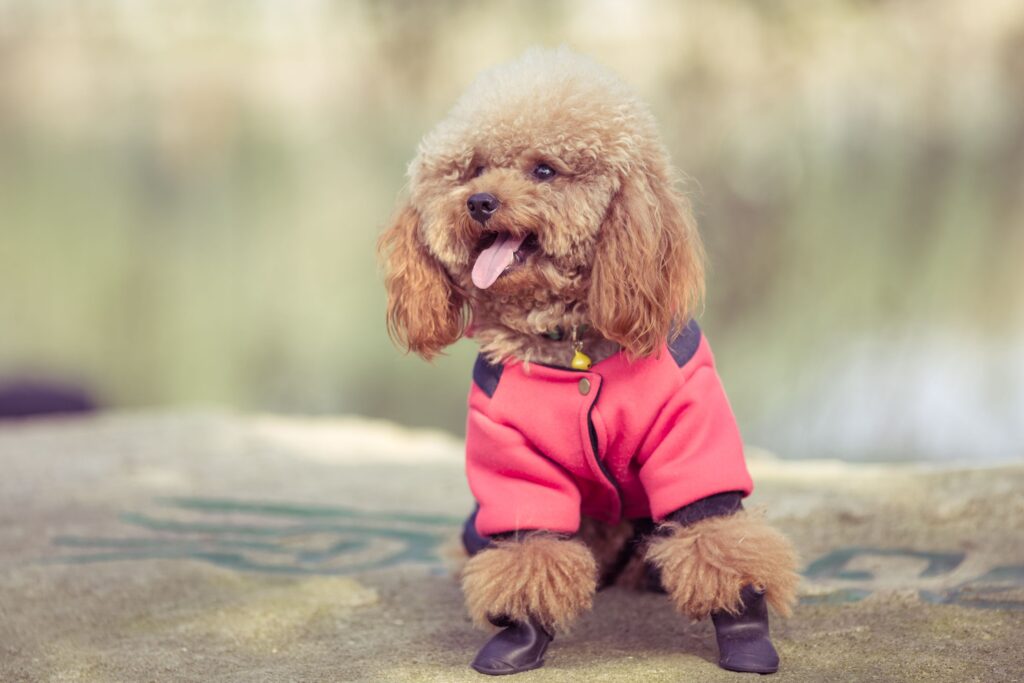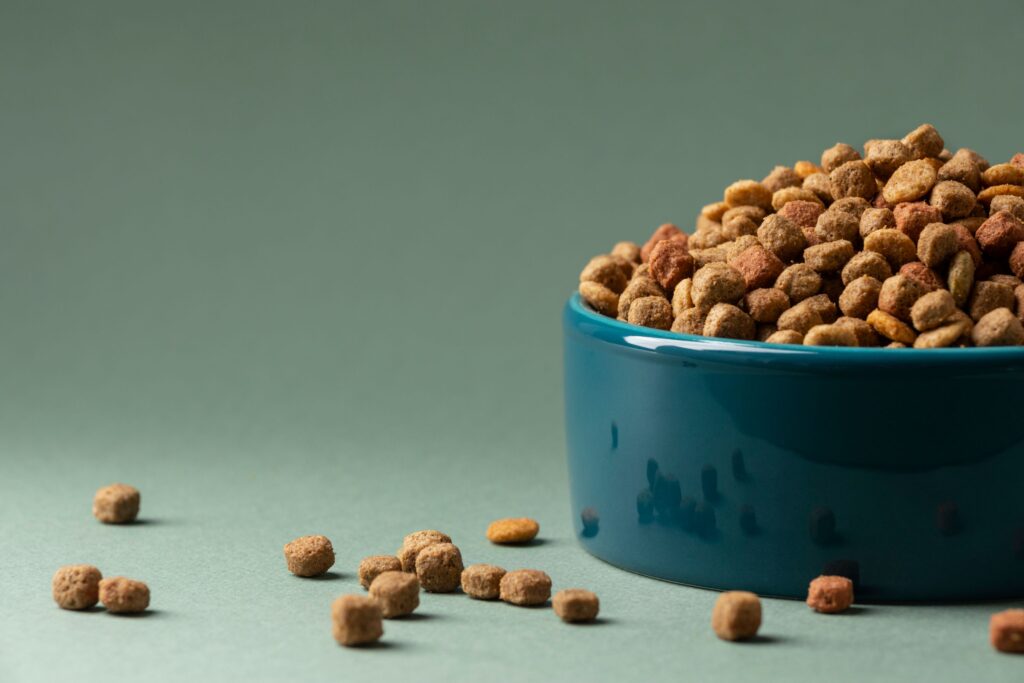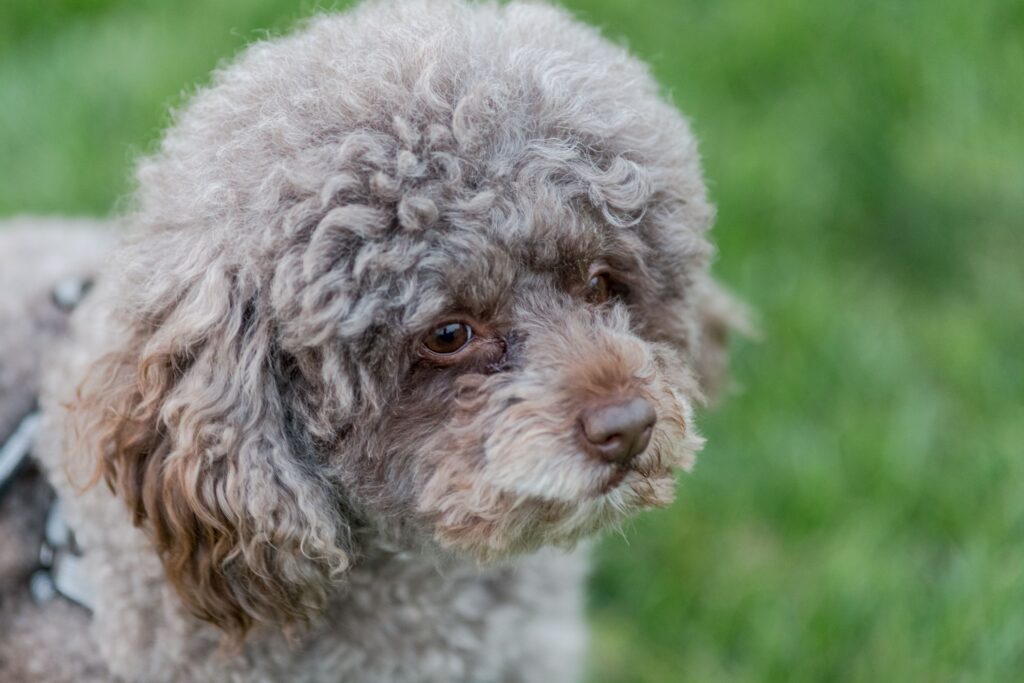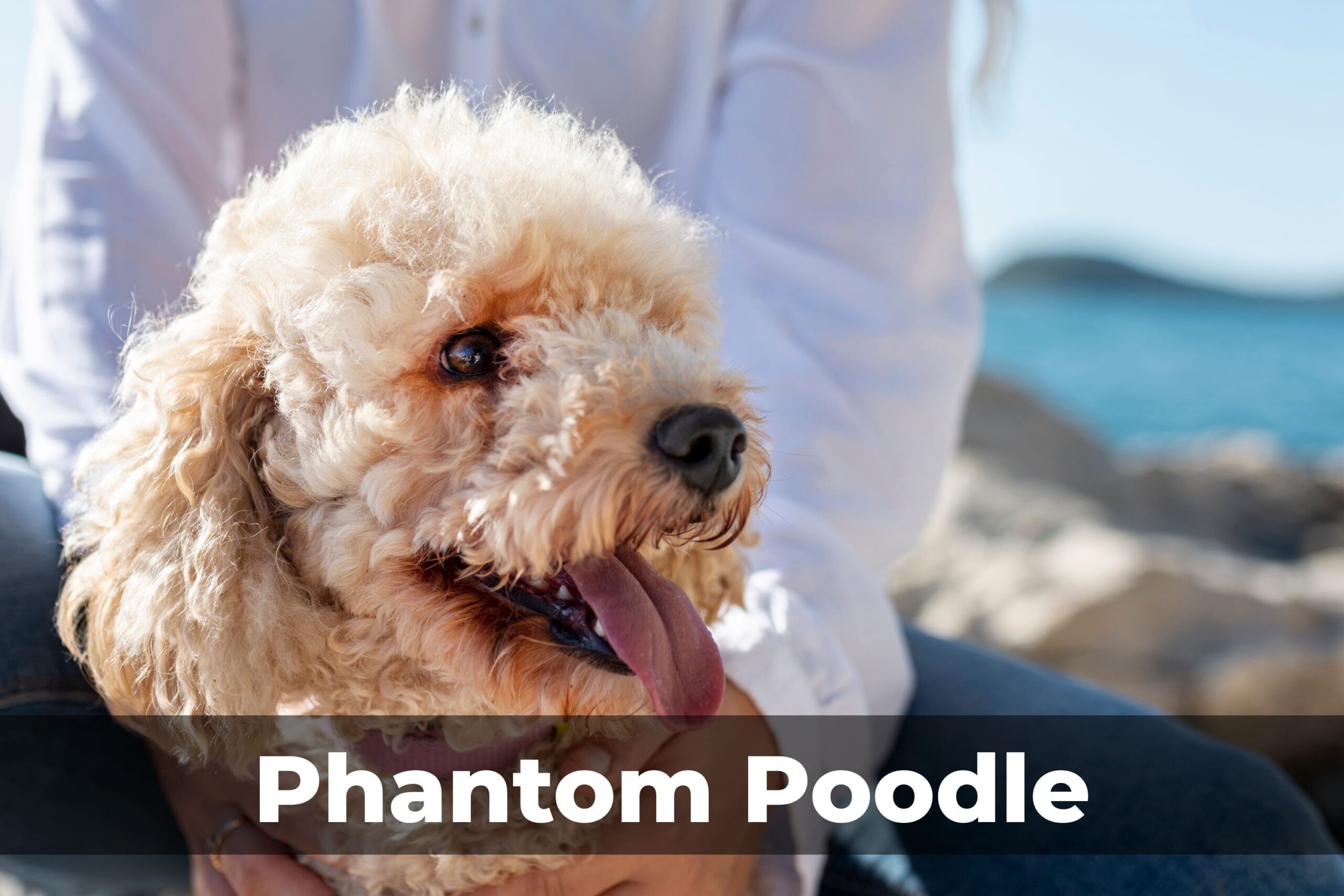Meet the Phantom Poodle: a stunning blend of elegance and intelligence that’s bound to capture your heart. With their mesmerizing two-tone coats and playful demeanor, Phantom Poodles are not just pets they’re enchanting companions. This article dives into the world of Phantom Poodles, uncovering their rich history, unique traits, and the secrets to their care. Whether you’re looking to add a touch of sophistication to your life with a new furry friend or simply want to learn more about this extraordinary breed, join us on a journey to discover why Phantom Poodles stand out in a class of their own.

Table of Contents
Introduction
What exactly is a Phantom Poodle? This question might pop up frequently among dog enthusiasts and potential pet owners alike. The term “Phantom Poodle” refers to a Poodle with a specific coloration pattern that makes them stand out in the Poodle community. Poodles are a diverse breed, known for their intelligence, elegance, and versatility. They come in various sizes and colors, and the Phantom Poodle is a particularly striking example.
History of Phantom Poodles
Origins of Poodles
The Poodle breed has a rich history dating back several centuries. Originally bred in Germany as water retrievers, Poodles gained popularity in France, where they were refined and became the national dog. Over time, Poodles were bred in different sizes – Standard, Miniature, and Toy – each serving different roles from hunting to companionship.
Development of Markings
Phantom Poodles have a unique two-tone coloration that developed through selective breeding. These markings are reminiscent of the Doberman Pinscher’s color pattern, featuring a primary color with secondary markings above the eyes, on the sides of the muzzle, chest, legs, and under the tail.
Physical Characteristics
Size and Build
Phantom Poodles come in all three Poodle sizes: Standard, Miniature, and Toy. Standards are over 15 inches tall, Miniatures are 10 to 15 inches, and Toys are under 10 inches. Regardless of size, they all share a similar build: well-proportioned, with a square outline and an elegant posture.
Coat Colors and Patterns
The defining feature of a Phantom Poodle is its distinct coat pattern. Common base colors include black, brown, and apricot, while the secondary markings are typically lighter shades like cream or tan. This coloration pattern adds to their appeal, making them a favorite among Poodle enthusiasts.
Temperament and Personality

General Temperament
Poodles are renowned for their intelligence and friendly nature, and Phantom Poodles are no exception. They are highly trainable, affectionate, and form strong bonds with their owners. Their keen sense of alertness makes them excellent watchdogs.
Behavior with Families and Children
Phantom Poodles are great family pets. They are gentle and playful with children, and their patience makes them well-suited to households with kids. They thrive on companionship and enjoy being part of family activities.
Interaction with Other Pets
Phantom Poodles generally get along well with other pets. Their sociable nature and intelligence help them adapt to multi-pet households, provided they are properly socialized from a young age.
Health and Lifespan
Common Health Issues
Like all breeds, Phantom Poodles can be prone to certain health issues. Common problems include hip dysplasia, progressive retinal atrophy (PRA), and Addison’s disease. Regular vet checkups and a healthy lifestyle can help mitigate these risks.
Lifespan Expectancy
Phantom Poodles have a relatively long lifespan. Standard Poodles typically live 12-15 years, while Miniature and Toy Poodles often live even longer, sometimes up to 18 years.
Regular Health Checkups
Routine health checkups are crucial for maintaining your Phantom Poodle’s well-being. Regular visits to the vet, vaccinations, and preventative care can help catch potential health issues early and keep your pet healthy.
Grooming Needs
Importance of Regular Grooming
Poodles are known for their curly, dense coats that require regular grooming. This is especially important for Phantom Poodles to maintain their distinctive appearance and avoid matting.
Best Grooming Practices
Brushing your Phantom Poodle’s coat several times a week helps prevent tangles and keeps it looking its best. Regular baths, nail trimming, ear cleaning, and dental care are also essential parts of the grooming routine.
Professional Grooming vs. At-Home Grooming
While some owners prefer professional grooming services to keep their Phantom Poodles in top condition, others opt for at-home grooming. With the right tools and techniques, you can maintain your Poodle’s coat yourself, but professional groomers can provide more advanced cuts and trims.
Diet and Nutrition

Nutritional Requirements
Phantom Poodles require a balanced diet rich in proteins, fats, and carbohydrates. High-quality commercial dog food that meets AAFCO standards is generally recommended.
Recommended Diet Plans
Feeding your Phantom Poodle a mix of dry kibble and wet food can provide a well-rounded diet. It’s also beneficial to include fresh vegetables, fruits, and lean meats as occasional treats.
Foods to Avoid
Avoid feeding your Phantom Poodle foods that are toxic to dogs, such as chocolate, grapes, onions, and certain artificial sweeteners like xylitol. Always consult your vet before introducing new foods to your dog’s diet.
Training and Exercise
Basic Training Tips
Phantom Poodles are highly intelligent and respond well to positive reinforcement training methods. Consistency and patience are key. Start with basic commands like sit, stay, and come.
Exercise Requirements
These energetic dogs need regular exercise to stay healthy and happy. Daily walks, playtime, and interactive toys can help meet their physical and mental needs.
Mental Stimulation Activities
Engage your Phantom Poodle with puzzle toys, agility training, and obedience exercises to keep their mind sharp. These activities also strengthen your bond with your pet.
Living Conditions
Suitable Living Environments
Phantom Poodles adapt well to various living conditions, whether it’s a house with a yard or an apartment. However, they do best in environments where they receive plenty of attention and exercise.
Adapting to Different Climates
Their coat provides some protection against the cold, but they might need extra care in extreme weather conditions. In hot climates, ensure they have access to shade and water, and in cold climates, consider a doggy sweater for added warmth.
Space Requirements
While Toy and Miniature Poodles require less space than Standards, all sizes benefit from having enough room to move and play. Regular outdoor time is essential for their well-being.
Breeding and Genetics

Breeding Practices
Breeding Phantom Poodles requires careful selection to ensure the distinctive coloration and maintain healthy genetic lines. Reputable breeders prioritize health, temperament, and adherence to breed standards.
Genetic Considerations
Genetic testing can help identify potential health issues and ensure that breeding pairs are compatible. This is crucial for preventing hereditary conditions and maintaining the breed’s integrity.
Finding a Reputable Breeder
When looking for a Phantom Poodle, seek out reputable breeders who provide health clearances and are open about their breeding practices. Avoid puppy mills and unethical breeders.
Phantom Poodles in Competitions
Show Competitions
Phantom Poodles can participate in dog shows, where their unique coloration and grooming are showcased. These events highlight their elegance and adherence to breed standards.
Agility and Obedience Trials
Beyond looks, Phantom-Poodles excel in agility and obedience trials. Their intelligence and athleticism make them top competitors in these events.
Adoption and Purchase
Adopting from Shelters
While finding a Phantom-Poodle in a shelter might be rare, it’s always worth checking. Adoption gives a dog a second chance at a loving home and can be a rewarding experience.
Buying from Breeders
If you choose to buy from a breeder, ensure they are reputable and ethical. Ask for health clearances, visit the breeding facility, and meet the puppy’s parents if possible.
Cost Considerations
Phantom Poodles can be expensive due to their unique coloring and popularity. Be prepared for the initial cost and ongoing expenses like grooming, health care, and quality food.
Phantom Poodle vs. Other Poodles
Comparison with Standard, Miniature, and Toy Poodles
While all Poodles share common traits, Phantom Poodles are distinguished by their two-tone coats. This unique feature sets them apart from solid-colored Poodles.
Unique Traits of Phantom Poodles
In addition to their striking appearance, they often exhibit a playful and affectionate personality. Their distinctive markings and charming temperament make them a unique choice among Poodle varieties.
Myths and Misconceptions
Common Myths
One common myth is that Phantom-Poodles are a separate breed. In reality, they are simply Poodles with a specific color pattern. Another misconception is that their unique markings affect their temperament, which is untrue.
Debunking Misconceptions
Phantom Poodles are just as healthy and trainable as other Poodles. Their distinctive appearance does not affect their behavior or health, making them an excellent choice for families and individuals alike.
Conclusion
Phantom Poodles are a captivating and elegant variety of the beloved Poodle breed. Their unique two-tone markings, combined with the typical Poodle traits of intelligence, loyalty, and friendliness, make them a fantastic companion for any dog lover. Whether you’re looking for a show dog, a family pet, or a new best friend, the Phantom-Poodle is a wonderful choice.
Frequently Asked Questions (FAQs)
What makes a Poodle a Phantom Poodle?
A Phantom-Poodle has a specific two-tone coloration pattern with primary and secondary markings in distinct areas such as above the eyes, on the sides of the muzzle, chest, legs, and under the tail.
Are Phantom Poodles hypoallergenic?
Yes, like other Poodles, they are considered hypoallergenic due to their low-shedding coats, making them a good choice for people with allergies.
How much exercise does a Phantom-Poodle need?
Phantom-Poodles are active dogs that require regular exercise, including daily walks, playtime, and mental stimulation activities to keep them healthy and happy.
Can Phantom-Poodles be trained easily?
Yes, Phantom-Poodles are highly intelligent and respond well to positive reinforcement training methods. They are eager to please and can be trained with consistency and patience.
What is the average cost of a Phantom-Poodle?
The cost of a Phantom-Poodle can vary widely based on factors such as breeder reputation, location, and the dog’s lineage. Generally, prices can range from several hundred to a few thousand dollars.
If you found our content helpful don’t forget to share it on your social media: Twitter
Also Read: Maltese Puppy










